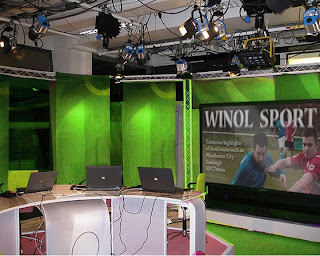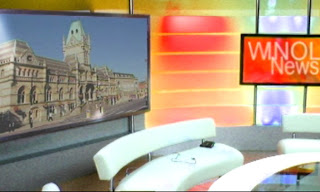 Roma! The capital of Italy, and the city with the BEST ice cream, (or gelato) I have ever tasted. Yes, the very first shop you should visit is straight to the corner shop for a tasty treat. Well, apart from the gelato there is still plenty to see and do. I stayed in Rome for four nights and five days. They were jam packed but what else is there to do whilst you are on holiday... sleep? I think not.
Roma! The capital of Italy, and the city with the BEST ice cream, (or gelato) I have ever tasted. Yes, the very first shop you should visit is straight to the corner shop for a tasty treat. Well, apart from the gelato there is still plenty to see and do. I stayed in Rome for four nights and five days. They were jam packed but what else is there to do whilst you are on holiday... sleep? I think not.Your first stop along my route is The Trevi Fountain, but it is a hard spot to find. We found only one sign to it down a tiny back alley. Before I went to Rome I had seen the Trevi Fountain in many films and shows and had always assumed that it was a large fountain in a large square. This assumption meant I was looking out for a large open area. Be warned the Trevi Fountain is a very magnificent fountain in a very small back alley. When looking for it, make sure you go under the road, through the huge tunnel and then turn left.

After Fontana di Trevi you will come across the Pantheon. This is a huge basilica with a dome that baffles architects today. The structure stands very tall but the walls support the huge dome above easily, which should not happen. The dome should collapse because the walls are not big enough but it is still standing. If you go inside you will notice that the design in the dome has also been copied to one of the domes in the Vatican.
After the Pantheon is Piazza Navona. It is a large piazza with three large fountains. These fountains are gorgeous and I suggest visiting early in the morning so you can see the whole piazza in all its glory. After about 11am it gets very busy, mostly people selling art. If you start my trip at about 9.30am you should reach everything along my path without too many tourists there.
Next up is The Vatican. This place is huge! Seriously, much larger than I expected. To give you an idea, there are numbers and words written across the top of the Vatican and each one is 8 feet high. This is a theme in Rome, everything is ten times bigger than you think it will be. Especially standing right up next to it. I was not sure if I would like the Vatican because I am not sure what I really believe in and I know that the Catholics have a very checkered past as well as present. I went with two friends who both had a lot of opinions on the Vatican and Catholics but when we got there it was not too overly in your face about religion. It was mostly about art, the Romans and the Popes.
Thankfully, we were approached by someone that was selling tours to groups of English tourists. It was 40 euros each for The Vatican, The Sistine Chapel and the The Vatican Art Museum. I highly recommend this as it worth every penny. Other guided tours are not, I will mention which ones later. 25,000 people a day visit the Vatican so this gives you an idea of just how busy it is. There were queues everywhere. This alarmed us slightly as we really did not want to be out in the heat for hours. This was our first bonus to having the guided tour, no queues, at all. We were first given a history of the Vatican and the Popes, I found this really interesting but we had to listen though headphones that were annoying. You get to used to them and they are must so you can hear the guide when it is busy.
Once we were on our way we started with the art museum. I expected art that I had never heard of before but there were statues, art and tapestry's everywhere that I had definitely heard of and that all had interesting stories behind. Michelangelo is the most prominent name in the Vatican. This is because he painted the Sistine Chapel ceiling and wall as well as doing many sculptures for the Pope. Apart from the Sistine Chapel the most interesting story is behind a sculpture called The Laocoon.
As soon as you enter the museum you will see a full sculpture of the Laocoon and notice the way in which the priests arm is. It is shot out, holding a disc of some kind. This is not the real sculpture. This is an imitation with the arm on. When the sculpture was originally found the arm was
 missing. The Pope asked Michelangelo to make a new sculpture with the arm in the correct position. Michelangelo felt he could not do the sculpture justice so asked all his assistants to draw a picture of how they thought the arm should be. There were hundreds of drawings. The drawing that averaged the most was with the arm shot out, almost saluting; so this is what was made. A few years later the rest of the arm was found. It turned out that the arm was bending backwards, behind Laocoon's head. The one and only artist to draw the correct sculpture was Michelangelo. He understood the human body, the muscles, the bones so well that he was the only one to study and draw the correct arm in the correct position.
missing. The Pope asked Michelangelo to make a new sculpture with the arm in the correct position. Michelangelo felt he could not do the sculpture justice so asked all his assistants to draw a picture of how they thought the arm should be. There were hundreds of drawings. The drawing that averaged the most was with the arm shot out, almost saluting; so this is what was made. A few years later the rest of the arm was found. It turned out that the arm was bending backwards, behind Laocoon's head. The one and only artist to draw the correct sculpture was Michelangelo. He understood the human body, the muscles, the bones so well that he was the only one to study and draw the correct arm in the correct position.These tours tell you as much as possible about the art on show, I do not study art and I enjoyed everything I was being told about. This may be too much for some people but you can always leave the tour at any point. As I said, I went in August and the whole of Rome was very busy, especially the Vatican. We were going round the museum about midday and it was almost intolerable. There were no windows open because of the nature and age of the art and there were easily about 600-700 people in each room. This made in unbearable at time but what kept me going was that at the end of all this was the Sistine Chapel. I have always been interested in the Chapel and the painting on the ceiling and of the Last Judgement. I have also seen many photos of it but nothing compares to the real thing. If you see only one thing in Rome, make sure it is the Sistine Chapel.
Michelangelo never classed himself as a painter, he was a sculptor. This meant that the painting was even harder for him. The next point that made it harder still was the fact that he was painting a fresco. This is when you paint with and on to plaster. It has to be wet when you are painting and if it goes dry before you finish you have to start again. The last painful point was the Michelangelo painted standing up tilting his head backwards to the ceiling. He never laid down on the scaffolding which people normally assume. His first part of the ceiling he did was Noah's Ark with PEOPLE going in to the Ark two-by-two not animals. This first panel took him one month to paint, the last panel took him one day. He took a six month break after 28 months work and finished the ceiling in four years. There were a lot of set backs and the work itself was not your typical fresco. He had to make the people he painted look 'normal' but on a vaulted curved ceiling. Not only did he paint the panels for the depicition of Genesis but he also painted
 prophets, shields and the pendentives to name a few.
prophets, shields and the pendentives to name a few.You may think that after reading my blog you do not need to visit the museum or learn any of the art history but you really do have to see it all for yourself, in person and I have only touched on some of the history, barely even scratched the surface. This finishes your tour to the Vatican as we have reached the end. Do not re-trace your footsteps home because getting lost in Rome means you will discover something new and beautiful. There is literally something to be photographed down every street.
The tour continued across the road to The Roman Forum. This was included in the tour and we did start it but the heat was too much. Anyone that has done a module in Romans at school will all ready know pretty much everything they talk about during the tour. I would not recommend this but again there is a queue before you go in and our tour did skip the queue. It is a very pretty place but not worth the 35 euros and shortened time in the Coliseum.
Lastly, Pompeii. This day trip was 60 euros and completely worth it. You can get more expensive day trips that stop at Naples but from what I have heard about it, it is not normally worth it. We got to the coach station, which was very close to the Central Terminal for trains, and very close to our hotel, only about a ten minute walk. The coach trip is about three hours but it really felt a lot shorter. They have one stop half way though too. We had a tour guide on the bus who told us about Pompeii and meeting times etc. She did not carry on with us in Pompeii though.


